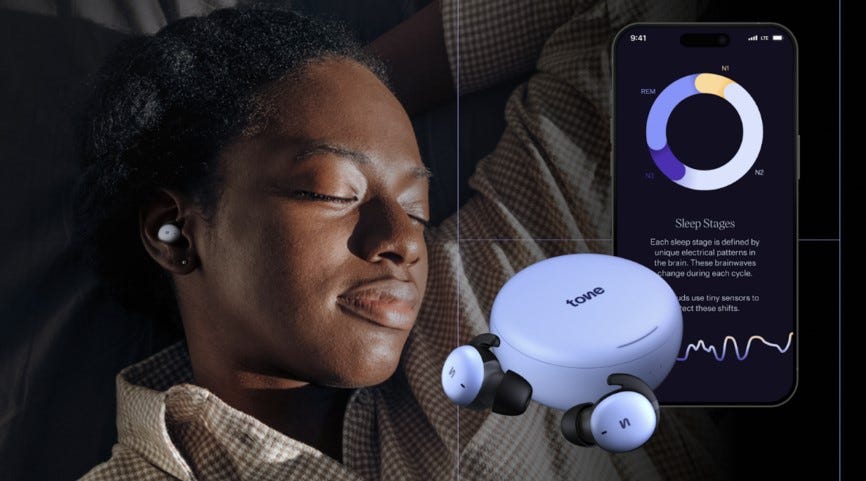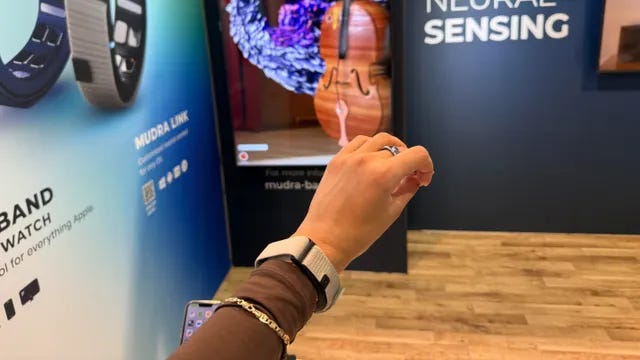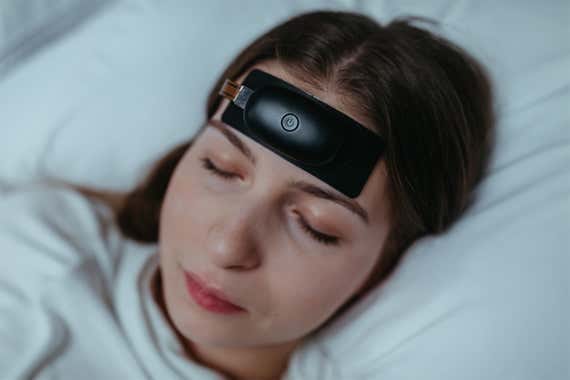CES 2025: Where Technology Meets Humanity 💡- Issue #15
As we kick off 2025, we are excited to bring you the latest edition of Neurotech Pulse, diving into the most remarkable moments from CES 2025, the world’s premier tech event. This year’s showcase was nothing short of extraordinary, featuring transformative innovations in neurotechnology and brain-computer interfaces. From game-changing product launches to groundbreaking collaborations, CES 2025 illuminated the future of technology, focusing on how these advancements are reshaping industries, improving lives, and inspiring a better tomorrow.
We’re also excited to highlight key moments and companies that stood out, from thought leaders in brain-sensing technologies to revolutionary startups pushing the boundaries of what’s possible. As we move forward into the year, we invite you to join us in exploring how these innovations are paving the way for the next generation of neurotech solutions.
The Evolution of Neurotech at CES
At CES 2025, neurotechnology emerged as a mainstream industry, with BCIs and wearable devices transforming areas like health diagnostics, productivity, and entertainment. Exhibitors showcased the growing adoption of brain-driven technologies across industries, offering insights into applications in cognitive health, smart devices, and neural augmentation. This marks an exciting time for neurotech, as it becomes integral to sectors such as healthcare, gaming, and wellness.
The event emphasized the important role of AI in advancing neurotechnology, highlighting its potential for widespread adoption. Innovations in AI, quantum computing, and digital health are driving rapid advancements, making BCIs more powerful, efficient, and accessible. These developments signal a future where neurotechnology seamlessly integrates with daily life, reshaping how we interact with technology and enhancing human potential.
🚀 Innovations at CES 2025
As CES 2025 showcased groundbreaking innovations, several products stood out for their intersection with neurotechnology. Here are some highlights:
Tone Buds : Brain-Sensing Earbuds
Tone Buds are brain-sensing earbuds that utilize EEG technology to monitor brain activity in real-time, offering personalized soundscapes designed to improve sleep quality. As per the company these earbuds adjust sound patterns based on brainwave feedback, creating an environment conducive to better sleep and mental wellness. The combination of neurofeedback and sleep enhancement positions Tone Buds as an exciting development for those looking to leverage neurotechnology for wellness. (Know more)Omi: AI Companion
Based Hardware, a San Francisco startup, unveiled its latest innovation, Omi, at CES 2025, an AI device designed to boost productivity through innovation. Omi AI companion functions as a regular AI device, similar to the Limitless Pendant, Humane AI Pin, and Friend. It can summarize meetings, answer queries, search the web for real-time information, and perform other AI chatbot tasks per the company. (Know more)
Mudra Link : Neural Wristband
The Mudra Link uses a neural wristband to capture wrist movements and hand gestures, allowing users to control devices hands-free. As per the company, this AI-powered technology facilitates seamless interaction with devices in a way they describe as intuitive and brainwave-like, with potential applications spanning VR/AR and neurotech-inspired control systems. (Know more)EvieAI : Wellness Assistant
Movano Health's EvieAI, integrated into their wellness app, offers personalized health insights based on an extensive database of over 100,000 medical journal articles as per the company. Trained to address various health queries, this AI assistant shows great promise in integrating neurotech for accurate, brain-related health advice. (Know more)
myWaves : Sleep Solution Kit
The myWaves Sleep Solution Kit claims to use a unique approach by capturing the brain’s delta waves and creating personalized soundscapes to improve sleep quality. By targeting brainwave patterns directly, the device exemplifies the role of neurotech in enhancing sleep and wellness through non-invasive methods. (Know more)CosmoRobotics : Neuro Exoskeletons
CosmoRobotics’ exoskeletons offer a unique application of neurotechnology for individuals with mobility impairments. As per the company, these wearable devices provide biomechanical support to assist with walking and rehabilitation, particularly for those with conditions like hemiplegia or muscle weakness. The exoskeletons aim to enhance mobility and improve rehabilitation outcomes by integrating neuro-driven technology. This serves as a powerful example of how neurotechnology can aid in mobility and support recovery. (Know more)
Humanoid Robotics at CES 2025: Realbotix's Melody and the Future of Human-Robot Interaction
At CES 2025, Realbotix unveiled their latest humanoid robot, Melody, a game-changing example of how robotics, AI, and human interaction are rapidly evolving. Melody’s advanced features represent a leap forward in creating robots that aren’t just functional but also capable of meaningful interaction and adaptability in various settings, from healthcare to entertainment.
Key Features and Neurotech Potential:
Eye Tracking & Object Recognition: Melody’s ability to track movement and maintain eye contact through integrated micro-cameras offers a human-like interaction experience. This eye tracking could play a significant role in neurofeedback systems, aiding in applications related to cognitive training or mental health by providing real-time responses to user behavior.
Modular Design: With interchangeable parts, Melody can be customized for various tasks, such as in patient care, where adaptable robots can assist in personalized Neurotherapy or help monitor patient conditions over time. The flexibility of modular design could also enhance the user experience in BCI interfaces, allowing for robots that dynamically respond to brain signals and modify their behavior accordingly.
Open-Source AI Integration: The robot’s open-source platform enables integration with third-party AI platforms, such as ChatGPT, and can easily be adapted for neurotech applications. This could open doors for the use of humanoid robots in neurotechnology settings, where robots assist in training, research, or personalized therapeutic services by engaging directly with brain-computer interface systems.
Advanced Mobility: With enhanced movement capabilities, Melody's fluid motions could be used in environments where interaction with BCIs or neurofeedback systems is necessary, creating new possibilities for immersive neurotech applications.
As the humanoid robot market continues to expand, Melody’s blend of mobility, interactivity, and AI integration could pave the way for next-gen neurotech solutions, merging the fields of robotics, AI, and brain-computer interfaces. Melody is an exciting example of how these technologies could evolve to create more responsive, intuitive, and impactful applications in the world of neurotechnology.
NeuroTech 2025: The Future of Neurotechnology – Insights from CES
The Neurotech panel discussion at CES 2025 highlighted the transformative potential of neurotechnology across healthcare, mental health, and education. Applications such as rehabilitation, prosthetics, and personalized treatments are set to redefine the quality of life. However, the panelists stressed the need to address public misconceptions, fears around data privacy, and skepticism stemming from past failures. Technical challenges, including the robustness of devices, lengthy development cycles, and the integration of AI, remain hurdles to widespread adoption. Despite these obstacles, innovations such as closed-loop systems, miniaturized non-invasive devices, and data-driven medicine are paving the way for impactful solutions in neurotechnology.
Looking ahead, neurotechnology shows promise in addressing chronic conditions, improving mental health care, and supporting patients with neurological disorders. The panel emphasized the importance of public education to dispel myths and foster acceptance. Ethical concerns, inclusivity, and collaboration between stakeholders were identified as critical to ensuring responsible development. With breakthroughs in minimally invasive implants and AI-driven systems, neurotechnology is set to transform medicine and redefine how humans interact with technology, paving the way for a promising future.
🔮Looking Ahead: The Future of BCI and Neurotech Innovation
CES 2025 demonstrated that the future of neurotechnology is bright, with rapid advancements in digital health and computing technologies, the future of BCI promises even more seamless integration with daily life, from healthcare to smart environments. As BCIs become more advanced, we expect to see even more significant changes in how we interact with technology and enhance human potential.
As we move into 2025, we will continue to watch closely as the neurotech ecosystem grows, and we look forward to collaborating with innovators and thought leaders at the forefront of BCI and neurotechnology.
🌟 Neurotech Pulse Special Edition: Call for Contributions!
Calling all researchers and writers! Want to showcase your work in our upcoming Neurotech Insights edition? Reach over 5,000+ neurotech enthusiasts by sharing your innovative research. Submit your details and work to saman.nawaz@nexstem.ai
💡Question:
❤️ Join us on Discord.
Thanks for reading Neurotech Pulse! Subscribe for free to receive new posts.












